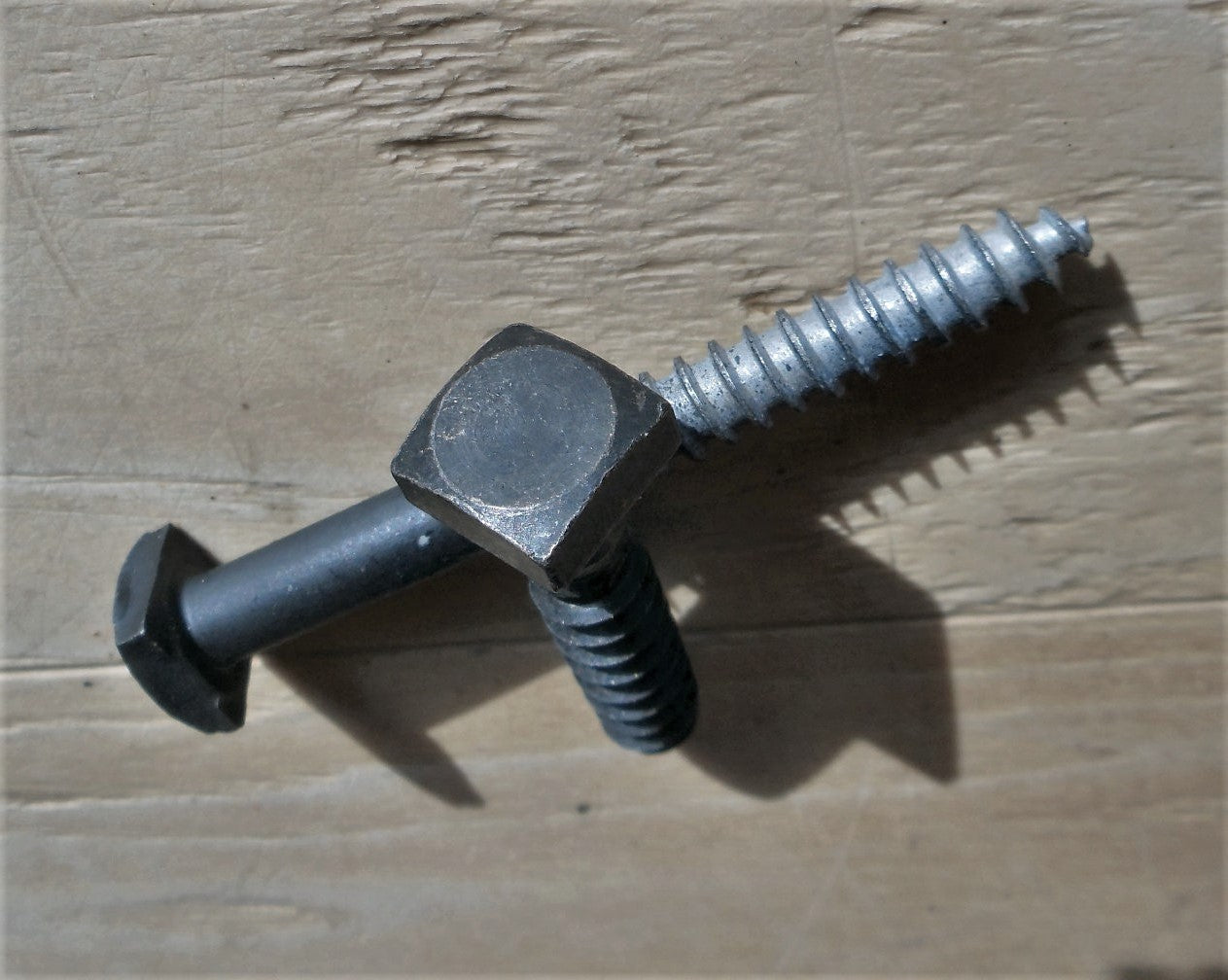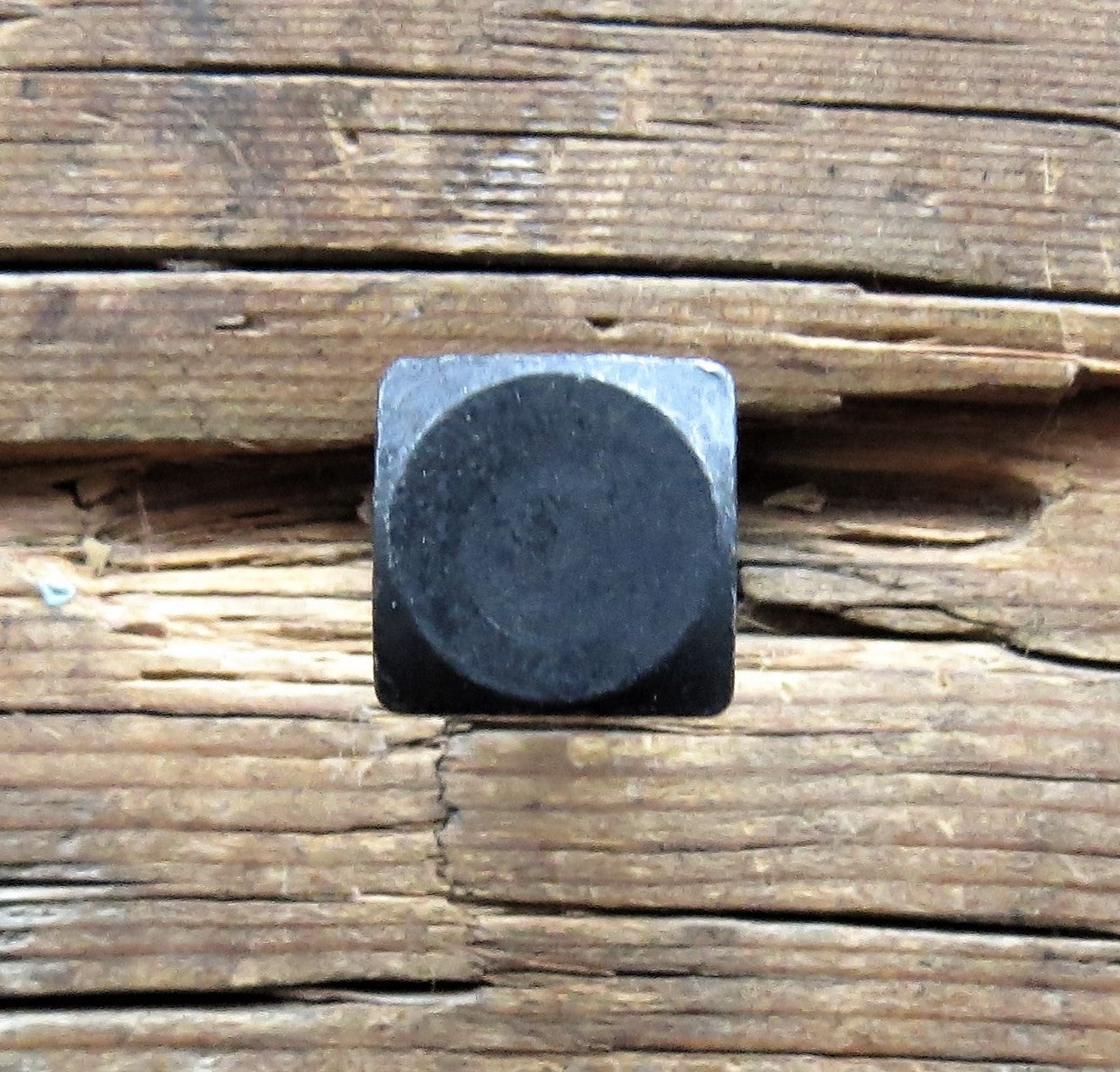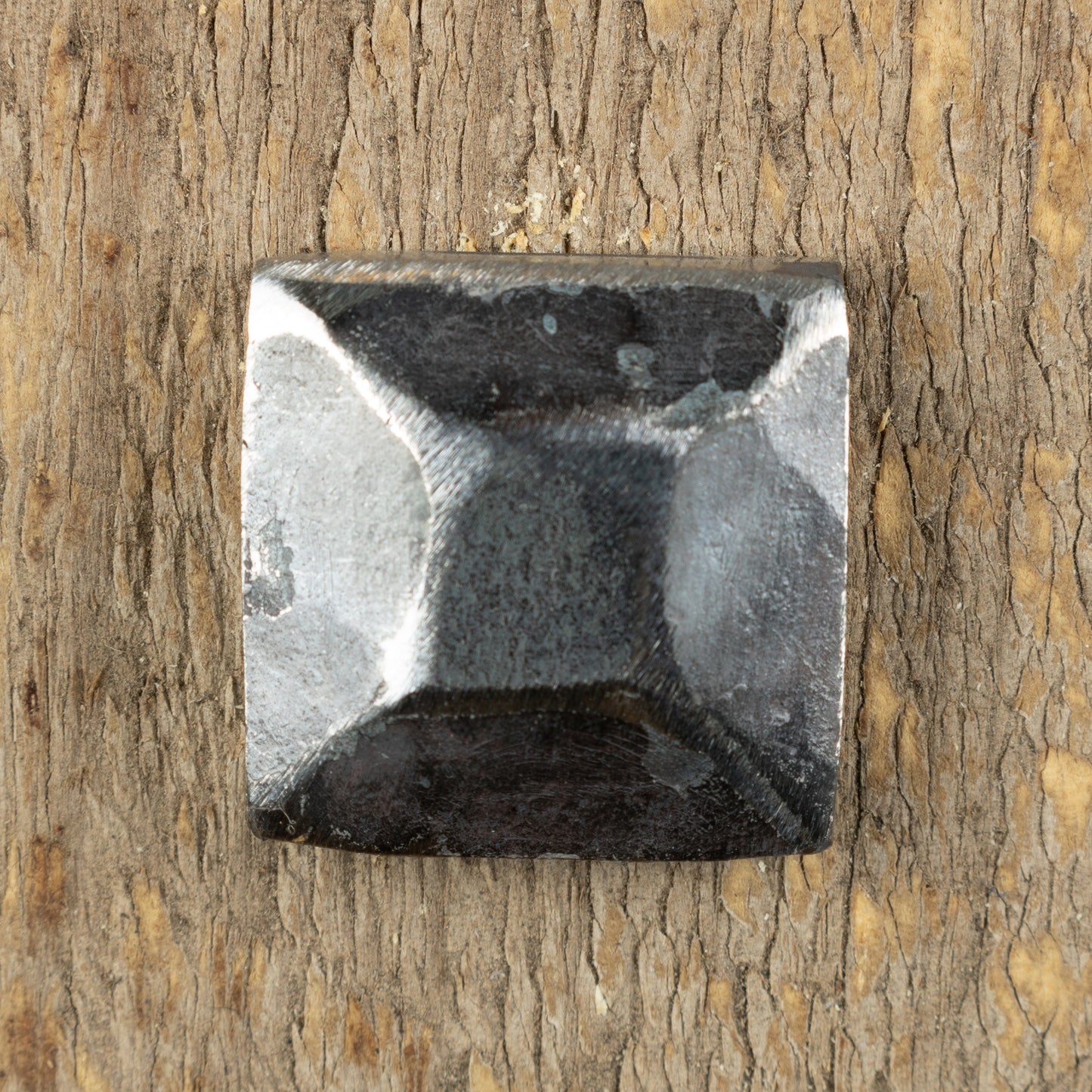
Whether you're dealing with wood or concrete, you need the right materials to keep your builds securely fastened. Lag bolts are one of the strongest fasteners available. Also occasionally called lag screws, lag bolts are used in any heavy home renovation project.
Different shapes and sizes of lag bolts can enhance building projects with a decorative flair.
But how do you use them? And why? This guide will explore everything you need to know about lag bolts.

What Are Lag Bolts?
Bolts and screws have been around since the 1400s. But lag bolts are special bolts used to secure heavy-weight projects. This includes things like roof beams, garage pillars, and other major building projects.
The word "lag" in lag bolts actually comes from its history. Originally, lag screws were made to secure barrel staves, which are also called lags. As lag bolts became more popular for other types of projects, the name stuck.
Though the names bolts and screws are mostly interchangeable when it comes to lag bolts, they are actually slightly different. Generally, the difference is determined by the tapering and thread size.
For example, bolts are usually larger and do not feature a tapered end. Bolts also have a thread type that can be secured with a nut. Still, when it comes to lag bolts, the terms are often interchangeable.

How Do Lag Bolts Work?
Lag bolts work similarly to any other screw or bolt fastener. However, they create their own thread when penetrating soft material, such as wood. This strengthens their fastening power.
With harder materials such as metal or concrete, lag bolts are still a first-choice fastener. Though you'll need to drill to get them in, they'll still hold up these harder materials much better than other kinds of bolts.
But how much weight can a lag bolt actually hold? Well, that depends on the size of the bolt. In general, the weights held are as follows:
- 1/4 inch lag bolt - up to 100 pounds per inch of thread
- 5/16 inch lag bolt - up to 200 pounds per inch of thread
- 3/8 inch lag bolt - up to 272 pounds per inch of thread
- 1/2 inch lag bolt - up to 312 pounds per inch of thread
- 3/4 inch lag bolt - up to 322 pounds per inch of thread
- 5/8 inch lag bolt- up to 330 pounds per inch of thread
While we also offer larger sizes such as 1/2" , 5/8", and 3/4", you should always use the smallest lag bolt possible for the weight of your project. This is because lag bolts are so powerful, they can easily damage the medium you're working with if they're too large. So, while you might think you're getting extra holding power, you could just be damaging your materials.

The Various Lag Bolt Types
All bolts and screws are categorized by their strengths, materials, head shapes, and finish. Lag bolts are the strongest and biggest of all fasteners. This broad categorization still comes with a variety of differences in finish, material, and head shapes.
Finding the right lag bolt for your project depends largely on what you'll be fastening. How much strength you require and the aesthetics of your project can make a major difference in choosing the right lag bolt.
Oftentimes, lag bolts are used for decorative reasons as much as practical ones. At
Because lag bolts are used for heavier projects, they're usually left pretty visible. Whether it be your roof, your deck, furniture, or any other big project, your lag bolt will likely be visible. That's why it's important to know the different types, to make sure they fit the look you're going for.
Lag Bolt Head Shapes: Hex vs. Square
One of the most noticeable lag bolt differences comes in the shape of the bolt head. At
Choosing between hex and square lag bolt heads is not just an aesthetic decision. These bolts are also specifically designed for certain uses.
Hex Bolt Heads
Hex lag bolt heads come in fully-threaded or partially-threaded varieties. They have six-sided heads, hence the hexagonal shape. This shape means they can be installed with a wrench.
Hex bolts are designed to be used with wood materials. With coarse threads and thick spillways, they are able to maintain a strong grip on all wooded objects.
If you want to install hex bolts in thicker materials such as steel or concrete, that is possible. You will simply need masonry support. The installation process will also need a washer to help the screw maintain stability.
Our hex lag screws come in a variety of different sizes and lengths. The diameters offered are between 1/4" and 3/4".
Square Bolt Heads
There is a wide variety of square head structural bolts. At
There are also different diameter ranges to choose from. When it comes to lag screws, the diameter also has an impact on the length.
Our variety at
The customization of your decorative lag bolts doesn't just come from the shape, though. Specifically, our square head bolts come in the following finishes:
- Gunmetal
- Black
- Rusty Metal Patina
- Pewter
- Wrought Iron
- Aged Bronze
- Oil Rubbed Bronze

Unique Lag Bolt Finishes
Some of the most popular finishes we offer are black and oil rubbed bronze. This is because of the unique vintage quality they add to any home. This classic flair meshes perfectly with both modern and more traditional home styles.
Because lag bolts are frequently exposed, black bolts can add a frequently sought-after industrial look. This look has become a popular interior style in recent years.
The exposed beam look that has taken over modern architectural design is complemented particularly well by darker lag finishes. This means finishes such as oil rubbed bronze are perfect for lighter ceiling designs.
Protecting Your Finish
For outdoor builds, such as outdoor kitchens or garages, exposed lags will need to be more rust-resistant. Some finishes that fare better outdoors include:
- Black
- Pewter Patina
- Bronze
With these finishes, the oxidation process that causes rusting is delayed. This means your lag bolts are more likely to last longer.
The Added Flair of Decorative Bolts
Decorative bolts can be a great addition to any building project. From ceiling beams to outdoor additions, decorative bolts aren't just good for large structural design.
You can also use decorative bolts to add a special look to light fixtures, bookshelves, racks, or even wall mounts for your TV.
And these ideas are just the tip of the iceberg. The great thing about decorative lag bolts is that the possibilities are endless.
Lag Bolts to Avoid
If you want your project to stand out in a positive way, there are some things you should be on the lookout for. Some lag bolts can have unsightly features that can ruin the look of your project.
It is best to avoid lag screws with unsightly numbers or markings carved into the head. For exposed projects, these will ruin the look.
At

How to Install Lag Bolts
Lag bolts are installed similarly to other screw types. First, you need to be sure you have all the appropriate builder supplies. This is the first step of any building project.
Next, you want to be sure the materials you're attaching are correctly aligned. This can be maintained by clamps or another person helping you.
Then, using a bit, drill a pilot hole for your lag bolt. The pilot hole should be slightly smaller than the actual screw. It also needs to be deep enough to fit the entire screw.
Once your hole is ready, fasten the bolt and tighten. This will secure your bolt, leaving it strong and sturdy.
Drilling the Perfect Pilot Hole
A key part of lag bolt installation is drilling the perfect pilot hole. The pilot hole will nestle the screw, making sure it remains securely in place. Without a perfect pilot hole, your project could collapse or cause damage to your materials.
As mentioned above, the pilot hole should be only slightly smaller than the actual screw diameter. The reason for this is that the threads of the bolt need to be able to dig into the wood to form a solid hold.
The guidelines for how big you should make your pilot hole depend on the type of wood you are using. Hardwoods and softwoods will have different widths.
Hardwood Guidelines
The guidelines for hardwood pilot holes are as follows:
- 1/4 inch bolt - drill 3/16 inch hole
- 5/16 inch bolt - drill 7/32 inch hole
- 3/8 inch bolt - drill 1/4 inch hole
Softwood Guidelines
Softwood pilot hole guidelines are a little different. This is because softwood stretches more easily and is more pliable than hardwood.
The softwood pilot hole guidelines are as follows:
- 1/4 inch bolt - drill 3/32 inch hole
- 5/16 inch bolt - drill 9/64 inch hole
- 3/8 inch bolt - drill 11/64 inch hole
Experts at
Frequently Asked Questions
You may still have some questions about lag bolts, even after perusing this guide. Many builders, from professionals to DIYers, still find that there's always plenty to learn.
Some frequently asked questions include:
Can You Reuse Pilot Holes?
Perhaps you've decided to change out your lag bolts for something new. Is it safe to reuse already drilled lag pilot holes?
In most cases, the answer is yes. However, be sure the lag you're using is the same dimensions and diameter as the one that was previously in the pilot hole.
The new lag screws should also have the same pitch and thread shape, so as not to damage your building materials or loosen the hold.
How Do You Choose the Right Size Lag Bolt?
You should always start your lag bolt buying journey by measuring the media you're going to be using. Whether it's wood, concrete, or metal, you want to be sure you have a good idea of the size of the materials you're working with.
In general, the lag bolt you purchase should be 1/4 inch shorter than the combined width of the pieces you're attaching.
In most cases, 5/16 inch bolts will be used. But for heavier builds, you should consider a 3/8 inch bolt or larger.
Of course, the perfect bolt will vary by the building project. Experts at
What's the Difference Between Hammered and Smooth Bolt Heads?
Hammered lag bolts offer a more "smithed" look. These have decorative pock-marks that can add dimension to your home or project.
Smooth bolt heads, on the other hand, offer a more sleek, classic look. Choosing which one is right for you will depend on your project. Either way, you're left with a nice, clean finish on all lag bolt heads.
How Much Do Lag Bolts Cost?
Our decorative lag bolts at
We can help you find the perfect bolt for your budget with our wide range of offerings.
How What are the size and grade specifications for lag screws?
Lag screws come in different sizes, which are determined by the diameter of the screw and the length measured from the underside of the head. The two critical dimensions to consider when ordering lag screws are the size and the grade. In terms of size, the diameter of the lag screw is an important factor. This measurement determines the thickness of the screw and is usually specified in the order. Additionally, the length of the screw, measured from the underside of the head, is crucial for selecting the appropriate screw size for a particular application.
In terms of grade, the majority of lag screws are classified under the ASTM A307 Grade A specification. This specification indicates that these screws are made from a low-strength, mild steel material. However, it is important to note that there may be instances where high-strength lag screws are required for specific projects. In such cases, it is essential to refer to the project plans and specifications to determine the correct grade of lag screws needed. Following the specified grade ensures that the lag screws possess the necessary strength and durability for the intended application.

Find the Perfect Lag Bolts at Old West Iron
Now that you know a little bit more about lag bolts, you can be sure to find the perfect choice at
Contact us today to explore our catalog and discuss your building project. We'll make sure you leave with the perfect addition to your build.
